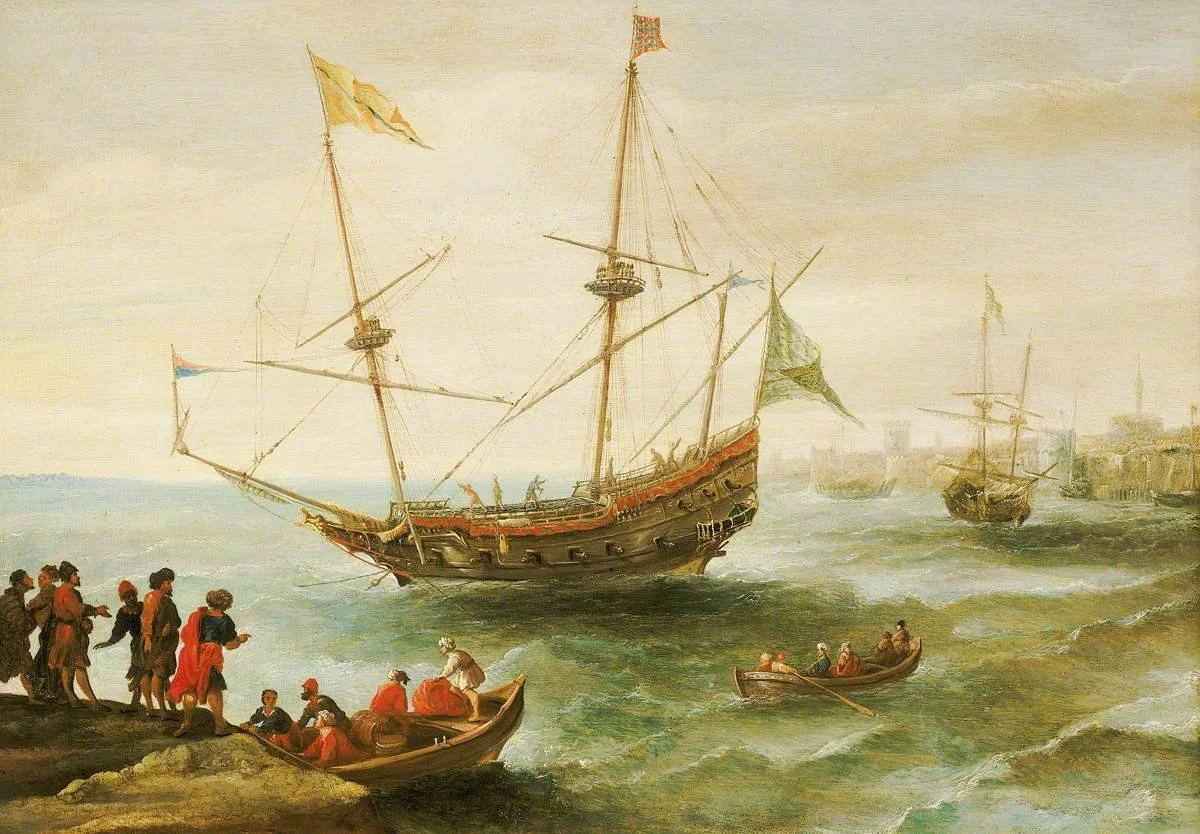What happened to the crew of the Norwich?
SEIZURE: An Algerine ship off a Barbary Port
The Way it Was
By Martin Taylor, city archivist at Hull History Centre
In the autumn of 1678, a Hull vessel called the Norwich set sail from the city for the port of Bordeaux in south west France to import wine. However, somewhere in the Bay of Biscay, she was intercepted by a larger, faster, square-rigged galley out of Salé, a notorious port on the Atlantic coast of Morocco.
Whether there was any fighting we don’t know. But we can surmise that the Norwich was boarded, captured, and probably sunk. Six men of the crew – John Lightley, the master; John Kirkas; William Grantham; Richard Clarke; George Dinsdale; and Lawrence Clarke – were captured and eventually taken to Algiers to be sold into slavery.
Their captors were Barbary Corsairs, pirates in European eyes, operating from ports on the North African coast whose reach extended as far as the British Isles. In 1625 it was estimated that up to a thousand Cornish people had fallen victim to Corsair raids. The Norwich had fallen prey to a long established, well-resourced, and effective operation.
Enslavement of Europeans in North Africa was different from the contemporary experience of enslaved people from Africa in the Americas. It wasn’t on anywhere near the same scale nor did it underpin huge and profitable (for the Empires involved) industries like sugar or tobacco production.
BRUTALITY: A European drawing of the slave market in Algiers
While Europeans enslaved in North Africa experienced brutality and hardship, they also retained hope. Because the Corsairs sometimes ransomed their captives, never an option for enslaved Africans, and in England, as much of Western Europe, there was an established procedure for raising ransoms.
News of the seizure of the Norwich reached Hull in January 1679, probably via an English merchant in North Africa. On January 23, 1679, the Bench Book (minutes of the meetings of the Bench of Aldermen – the predecessors of Hull City Council) records an order that a letter be written to Mr Stockdale, their representative in London, “to informe himself what course may be taken for the relief and release of John Lightley the younger… master of the ship called the Norwich of Hull and Five men and a boy more of the said shipps company taken lately in a voyage to Bordeaux by a Salley man of war who hath carried them prisoners and captives to Salley and have sett great fines upon their heads for their Ransoms”.
Stockdale spoke to London merchants who had ransomed captives before and learned how it was done, including the eminent Thomas Papillon. He invited himself to dinner with the Lord Mayor of London and attempted to exploit the fact that back in 1666, the people of Hull had raised money to relieve the distress of victims of the Great Fire of London, as a means of pressurising the Lord Mayor to fund the release of the Hull men. However, his fund was oversubscribed and there was no help from London for John Lightley and company.
SETTING SAIL: The entrance to Hull’s old harbour
Meanwhile in Hull money had been raised through collections in church with the permission of the archbishop, and the Bench of Aldermen authorised expenditure from the town’s funds. On September 30, 1679, the Bench Book records that Ann Lightley, John’s wife, Hannah Kirkas, John Kirkas’ wife, and Laurence Clarke senior, father of Laurence Clarke, had petitioned the aldermen to add to the money raised from the town’s resources. £20 was authorised to be released and added to the sum which was then divided into seven parts. Two parts (£90) were to be given to Lightley as his ransom was twice that of his crew members; the other five were granted £45 each towards their ransoms which varied between £75 and £100, the last for Laurence Clarke, the cabin boy. The balance of the ransoms was to be raised by the captives’ families and friends.
So, did the Hull men ever get back? We know that in 1681 George Dinsdale and William Grantham, still in captivity, were writing home, referring to “their cruel bondage…” but there’s no definitive proof any of the six every returned. Hopefully though, we do know that in 1695 a John Lightley and his family were living in Austin Ward in Hull, and in 1697 a Lawrence Clarke and a Richard Clarke with their families lived next door to each other in Blackfriargate.
EMINENT MERCHANT: Thomas Papillon
But in 1680 there came news that three other Hull sailors were captive in Algiers: George Kitching, and two of his men, Humphrey Popplewell and Samuel Hall, the “ship’s boy”. We are not given the name of their ship, nor told whether they were merely survivors of a larger crew.
They may not even have been sailing out of Hull, but they were sons of Hull – either native or adopted – and the townspeople rallied round. Funds were raised in church and door-to-door; contributions were received from Bridlington, Scarborough, and Whitby; and money obtained from a national collection to ransom Barbary captives made in August 1680 to which Hull had contributed £70.
But sadly, we don’t know either if these three ever returned to Hull, and we should remember that only a small proportion of British captives ever saw their homes again, despite the best efforts of their families, fellow townsmen, and government.
So, there’s every reason to remember the names of John Lightley, John Kirkas, Lawrence Clarke, Richard Clarke, George Dinsdale, William Grantham, George Kitching, Humphrey Popplewell and Sam Hall, the ship’s boy.






